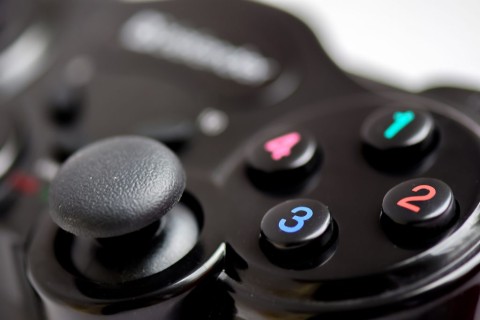Outplay your competition with a smarter, stronger demand planning strategy
Customer demands are changing. So why isn’t your demand planning strategy? It’s time to level up your demand planning and experience revolutionary breakthroughs in supply chain performance, planning and profitability.
Demand complexity is increasing thanks to consumers who now want more customization, omni-channel purchasing options, rush delivery, easy returns, and environmentally and ethically crafted merchandise, just to name a few present-day requirements.
So how can your supply chain handle it all? The key is to recognize solving today’s demand planning challenges just isn’t possible with yesterday’s dated processes and technology. It’s like trying to play Call of Duty: WWII on a system designed only to handle the technical requirements of Duck Hunt.
The inevitable lag time, glitches and poor visibility destroys the experience. Yes, once upon a time you may have considered those old systems cutting edge. Now they just don’t have the capabilities you need. Successful demand planning is quick, collaborative and up-to-date – not slow, siloed and full of stale data. It can’t take weeks to make critical decisions that don’t even align with reality.
When changes to your demand plan happen, communication between business functions has to be immediate. Everyone needs to understand the ramifications of the change and come to a compromise-based corrective path. The only way to do that is to have processes and technology that enable critical demand planning functionality like:
Forecasting:
Stop chasing that perfect score. It doesn’t exist! You’ll never reach 100% accuracy. Instead, work to improve your forecasting by using a complete, accurate data set that includes information from across the organization – sales, marketing, finance, etc. You’ll get a more complete picture. And just as importantly, develop a supply chain that lets you plan, monitor and respond simultaneously and continuously. That way you’ll be able to spot trends, or get ahead of a problem, before your supply chain starts to feel the impact.
Segmentation:
Balance complexity with efficiency and flexibility by segmenting your supply chain. You’ll be better equipped to meet shifting demand. Since segmentation doesn’t have a one-size fits all approach, weigh the demands of your customer base against corporate priorities and key performance indicators (KPIs). Then decide how to segment, basing your decision on factors like product complexity, market demands, manufacturing process or risk.
Collaboration:
Make sure everyone’s playing the same game, on the same platform. Eliminate corporate silos to avoid fractured functionality and get everyone focused on the same end goal. That will help create a seamless, responsive supply chain. Don’t forget, the best demand plans are ones everyone has confidence in and include input from all stakeholders.
Technology:
Go next-gen with your demand planning software. Pick a solution that gives you the ability to connect data, processes and people in a single system. The right technology for game-winning demand planning will provide end-to-end supply chain visibility, cross-functional collaboration, prescriptive analytics and some level of automation. No matter who your customer is, or what you’re supplying to them, the growing number of potential combinations means your supply chain has to be ready to respond.
When it comes to demand planning, you’ll need to be faster, smarter and more flexible if you want to outplay your competition. Want to learn more about how you can level up your demand planning processes? Check out our latest eBook, Demand planning: 4 ways to outplay your competition.
Additional Resources
- Demand planning frequently asked questions





Discussions
Leave a Reply